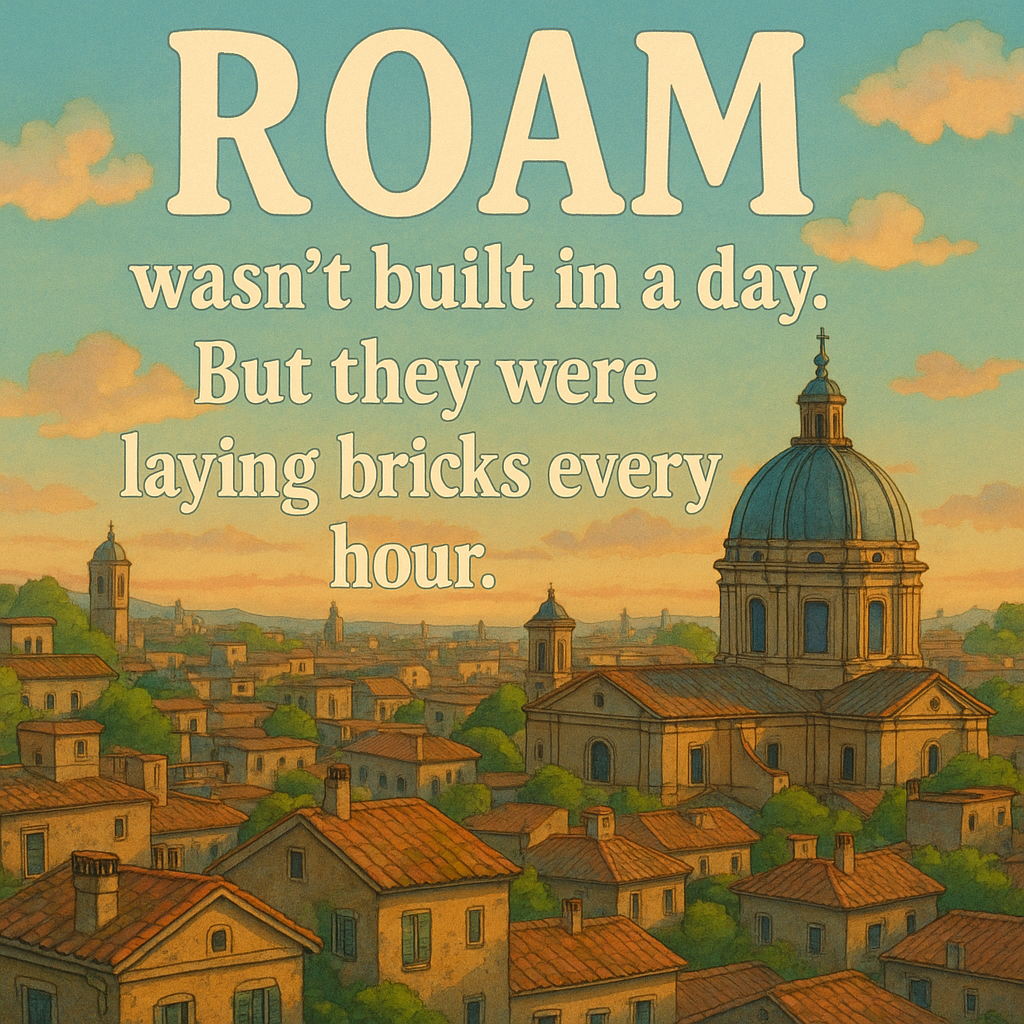Commentarii Roamani: Pages/Systems Worth Building, Learning using [[Roam Depot]]
|
Commentarii Roamani We continue our series Pages/Systems Worth Building, shifting focus from isolated pages to full systems that help your Roam graph grow more powerful day to day. This issue is useful for students, but also for any learners who are serious about mastering what they study. We’ll show you how to combine a couple of Roam Depot extensions into a study workflow that uses AI to leverage spaced repetition for learning. 🌀 Systems Worth Building: [[Learnloop]]Studying with AI lets you ask questions, go deeper, and clear up confusion. Add spaced repetition and you get the [[Learnloop]]: a system for understanding and remembering, to prevent forgetting at an exponential decay rate. From Gwern's post on spaced repetition: 🧰 The ToolsTo install an extension, go to the left sidebar, and open Roam Depot. Search for the extension and click Install (see all the details in the video below). Each extension comes with a description from its creator. For this workflow we used:
🧱 (optional) Structure for your NotesEach large topic gets its own page, with subtopics and subcategories linked inside. Within those, you can create individual note pages: one per concept, idea, or question (think [[Permanent Notes]]!). This keeps your graph navigable, layered and atomized. 🌊 The WorkflowHere is a simple two-part workflow for taking and studying notes.
While reviewing notes, use Live AI to generate flashcards by writing a prompt, selecting it, and clicking the ⚡️ icon. Once the AI suggests questions, format them as flashcards: tag the question block with #memo, and indent the answer underneath. To review, open the Memo extension from the left sidebar and click Review. Rate your recall and Memo will handle the scheduling by bringing due cards back to your sidebar automatically (very neatly color-coded).
Take your conversations with the AI assistant right under the [[Exploration]] block in the permanent note you're studying. Use it to enrich your notes, ask questions, test your understanding, or follow threads of curiosity, by typing or using your voice (!). It’s a lightweight way to explore ideas while staying in context and neatly tracking tangents you go on. This balance between review and curiosity makes your notes active: part memory system, part thinking partner, all without leaving Roam 🏠
|
Commentarii Roamani
Product updates, power-user tricks, and workflow ideas — in your inbox every two weeks.
Commentarii Roamani In this issue we'll do a wrap-up of the main ideas and systems we explored in Commentarii Roamani in 2025. If you're a new subscriber, read on to see where to go for content you've missed! And if you've been around for the whole journey, revisit the issues that could help you turbocharge your entry into 2026! Either way, think of bookmarking and sharing this issue as a useful reference tool (we linked all the issues to make it handy) The newsletter issues we've sent out...
Commentarii Roamani Reading produces value when a thought interrupts the page. A sentence lands, a question forms, a connection starts to appear, and then the article keeps moving. What matters is whether that moment turns into something you can work with later. Roam Reader is your tool for reading intentionally: remix your notes, comment on them, tag them, nest them. Watch our in-depth tutorial on YT here and our thread on X! It's built around capturing the moment in a form that stays...
Commentarii Roamani In this issue, we look at Better Tasks, a Roam Depot extension by Mark Lavercombe that brings structured, repeatable task logic directly into your graph. It treats each TODO as a block with clear attributes: repeat, start, defer, due so you can manage tasks without leaving Roam or maintaining a second system. 💎 Roam Depot Gems: Better Tasks 💎 Better Tasks works quietly: when you complete a repeating task, the extension can generate the next instance on the correct day...
